Sessionboard
How Eleken helped Sessionboard stop fixing and start building

Conference content is usually a mess. Speaker materials get buried in email threads, submissions are tracked manually, and files vanish into spreadsheets.
Sessionboard set out to fix that by giving organizers a single platform to manage speakers, sessions, and content. But the product had problems of its own: a UI inherited from a legacy tool, static design files, and inconsistent workflows across modules.
They had already tried hiring help, but previous vendors missed details, broke patterns, and created more work than they solved.
That’s when Sessionboard turned to Eleken, with two clear goals:
- Bring structure to a fragmented platform
- Introduce AI to scale speaker and content workflows
And just as important: they needed a designer who could work independently, without constant direction.



The problems holding Sessionboard back
When Sessionboard approached Eleken, they already had traction and a clear vision: become the go-to platform for managing speaker content in the event industry. But their progress was blocked by foundational issues in both UX and operations. The product worked, but not smoothly, and definitely not at scale.
Instead of jumping into a full redesign, we focused on stabilizing what was already there. Our first step was a deep audit of the platform’s architecture, user flows, and interface structure.
What we found:
- Fragmented content storage: Speaker bios, session info, and files were scattered across modules, with no unified gallery to manage or reuse them efficiently.
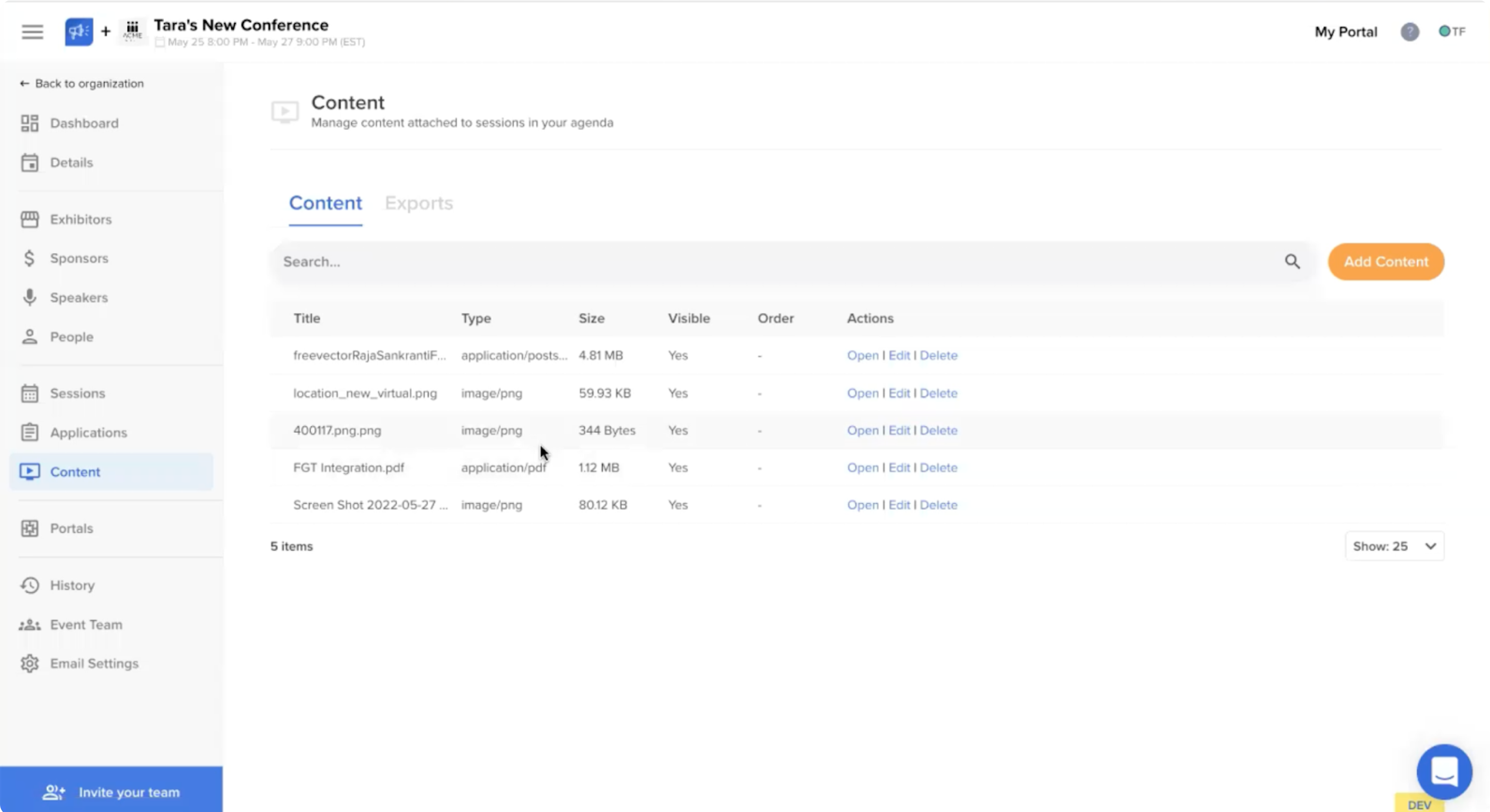
- Inconsistent visual language: Sessionboard had inherited legacy patterns from Lend (their earlier tool), and with no design system in place, styles and components varied across pages.
- Outdated interface elements: Navigation was unclear, layouts were cluttered, and important content got lost in weak hierarchies — especially in key views like the speaker portal and admin dashboards.
- No scalable systems: The platform lacked core infrastructure, such as a speaker CRM and UI-level support for new features like deduplication or AI workflows.
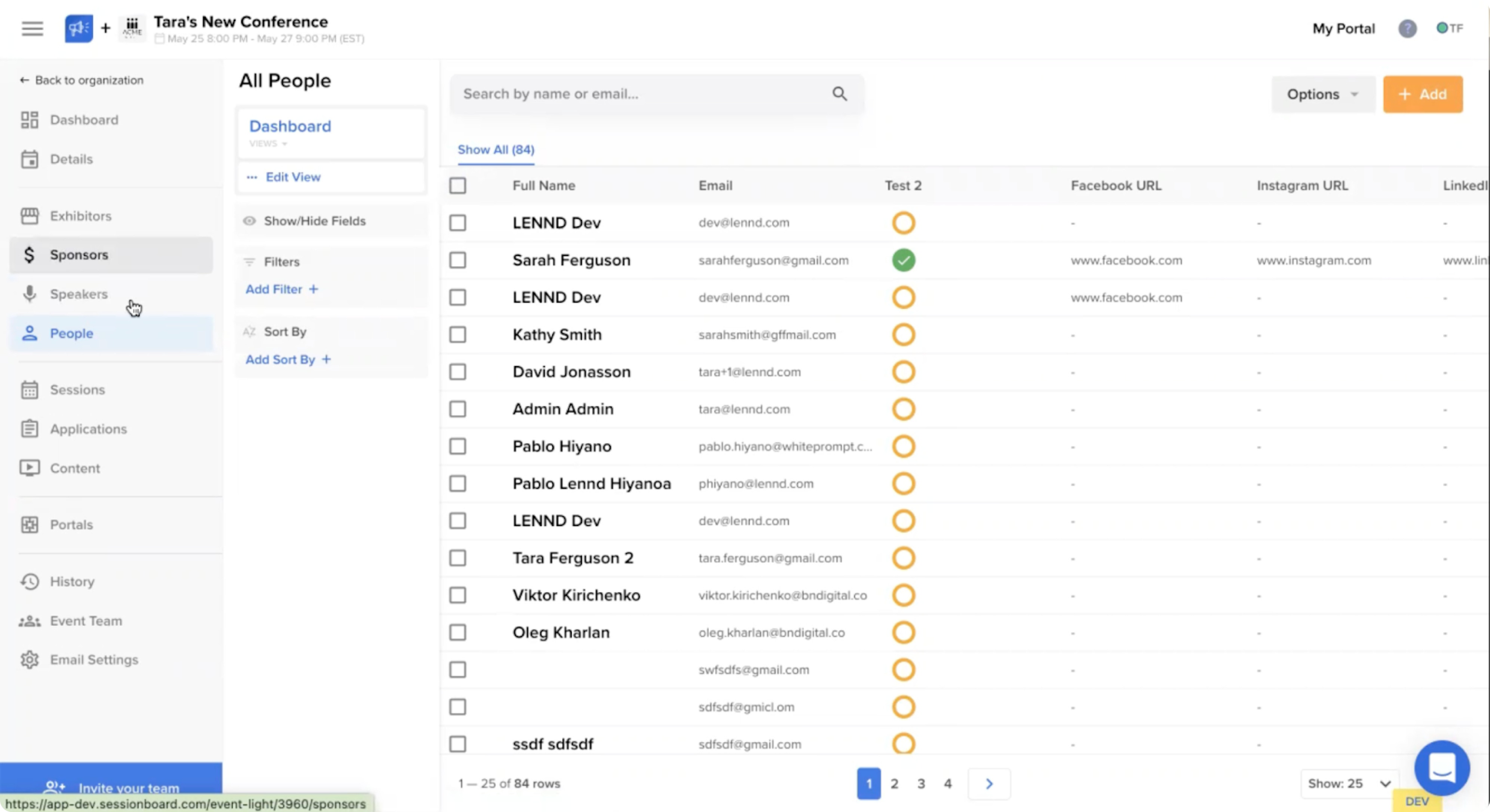
These were the issues standing between Sessionboard and their growth plans. By stepping in with a structured approach and autonomous execution, we cleared the runway for what came next.
Fixing the foundation to unblock adoption
Before building new features, Sessionboard needed to stabilize its core. Fragmented data, outdated UI, and inconsistent workflows were slowing adoption and creating friction for event teams. Eleken’s first priority was to bring clarity, structure, and scalability to the existing experience.
Organizing Speaker Data: CRM + Deduplication
Speaker-related data was scattered across modules — bios in one place, session links in another, files stored separately. This chaos made content management slow and error-prone. To fix it, Eleken introduced a two-part solution: a redesigned Contacts page for high-level visibility, and a centralized profile hub for in-depth management.
The new Contacts page uses a grid layout to surface speaker roles, sessions, and organizations at a glance. Advanced search and bulk filters help users scan large datasets and find what they need fast.
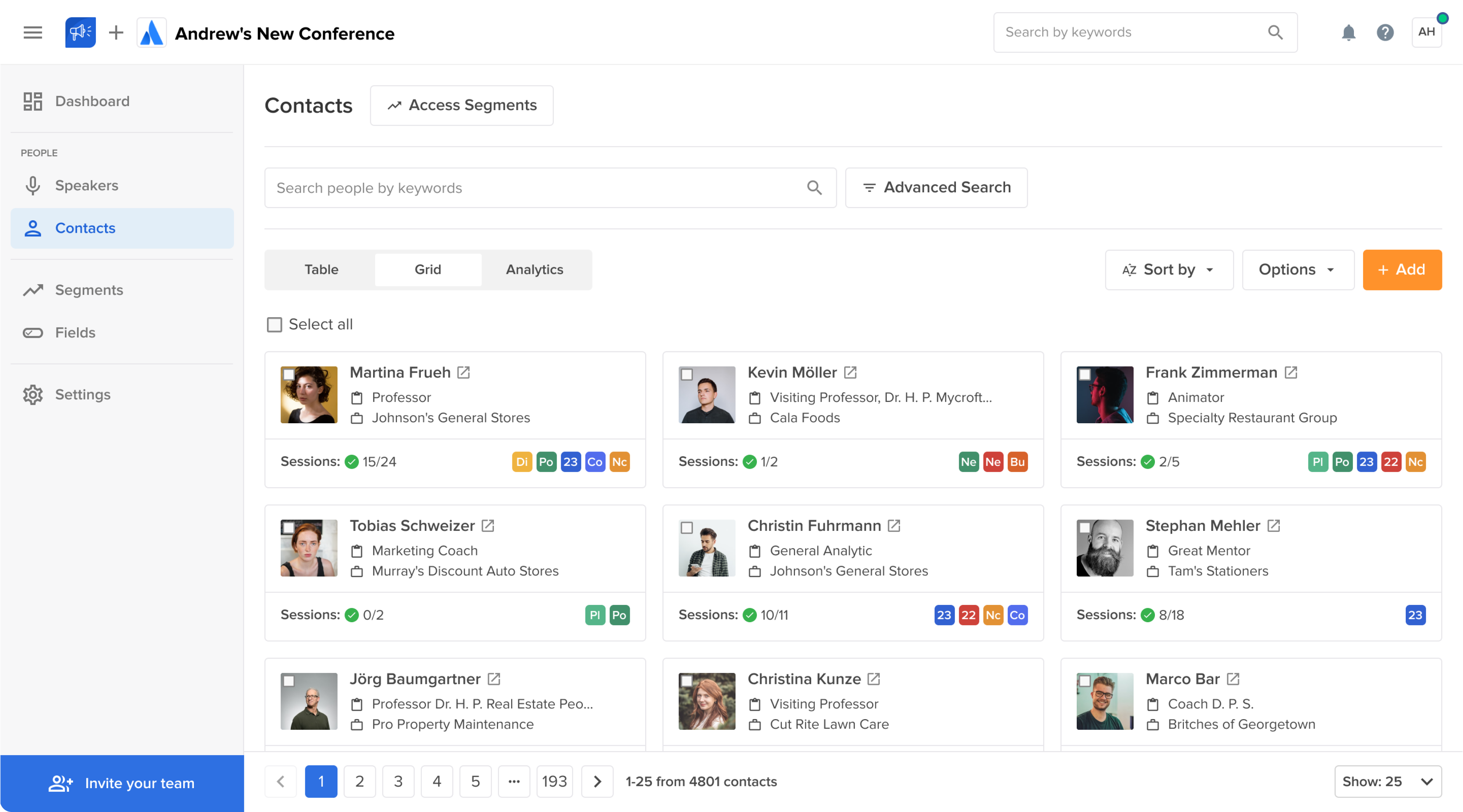
Clicking a contact opens a unified profile with bios, files, and session links grouped into clean blocks. We added tabs, pagination, and redesigned cards to streamline navigation and make key info instantly visible. These updates turned a cluttered system into a fast, structured workspace — and removed a major blocker to adoption
.webp)
But content structure wasn’t the only problem — data quality was another. As Sessionboard grew, a single speaker often ended up with multiple profiles, created through different event links, emails, or submission methods. The system couldn’t tell they were the same person, making task assignments, session linking, and communication a headache.
Eleken stepped in to design a custom deduplication flow that solved this chaos. We built a system that automatically flags potential duplicates, then guides admins through a side-by-side comparison and field-by-field merge. The final result is a single, accurate profile, with all duplicates soft-removed and safely logged.


It was a process fix that brought order to the contact database and turned a manual, error-prone workflow into a streamlined system that supports scale.
Cleaning Up the UI and Unifying the Design
Once we addressed content fragmentation and database issues, we turned to the next hurdle: an outdated interface that made even simple tasks frustrating. Key screens were overloaded, visual hierarchy was weak, and layouts didn’t adapt well to smaller devices.
Our designer approached the challenge with two priorities:
- make key actions more accessible;
- bring visual consistency across the platform.
We started by simplifying the UI. Dense pages were broken into clear content blocks that surfaced essential speaker and session info at a glance. Tabs and pagination replaced long-scroll layouts, while redesigned cards and repositioned actions made navigation faster. Layout spacing was optimized for smaller screens, and robust filters and search were added to help users locate content with ease.
.webp)
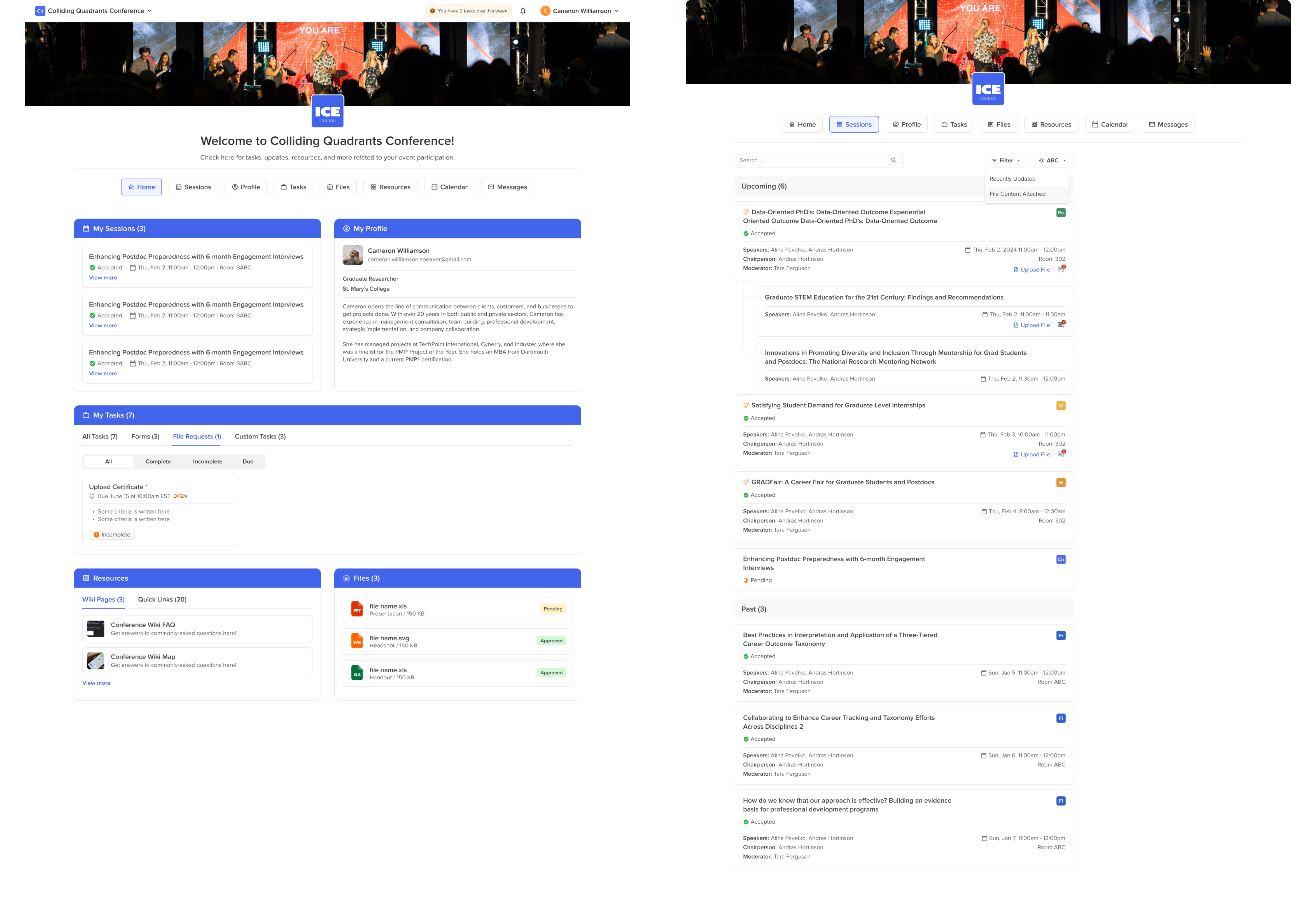
Cleaning up the interface was not just about polishing visuals. It involved resolving deep inconsistencies left by previous teams. The same components often looked different in design files, in production, and across outdated Figma versions. To bring order, Eleken’s designer audited every variation, aligned with the PM to choose the most appropriate styles, and rebuilt each component with consistent logic and proper settings.

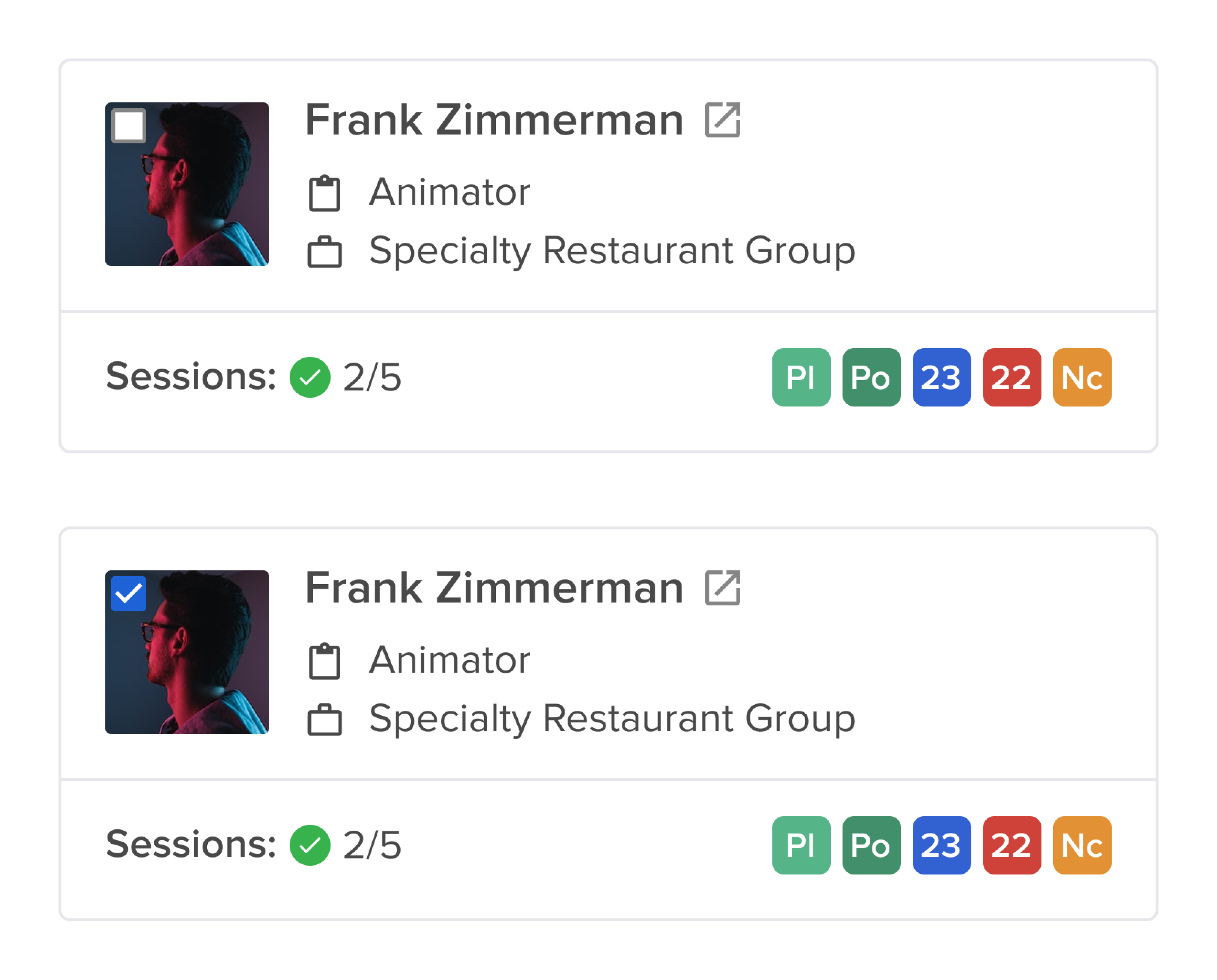
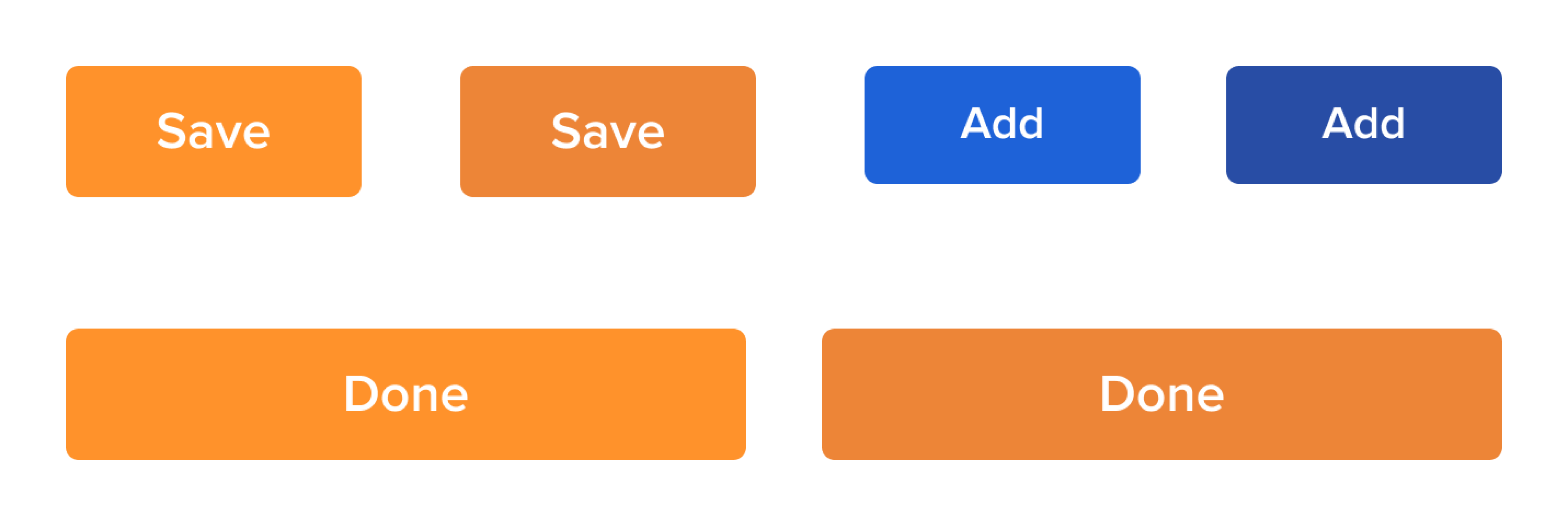
The result was a fully unified design system that matched the actual product and respected the existing visual language. By standardizing components and following the established platform style, we ensured design consistency, improved dev handoff, and created a scalable foundation for future features from CRM tools to AI workflows.
Tackling content overload with AI-powered features
Reviewing hundreds of speaker bios, session abstracts, and file submissions is one of the biggest pain points for content managers. To scale that process without sacrificing quality, Eleken introduced AI-powered tools and made them truly usable, not just functional.
Our designer worked autonomously, aligning each feature with existing platform logic, researching how other tools handled complexity, and applying proven UX patterns to ensure a seamless user experience. She used familiar patterns — steppers for complex flows, sidebars for fast navigation, and filters for managing bulk data — to make advanced features feel intuitive.
With AI, structure matters. Vague inputs lead to vague results. That’s why we designed clear, step-by-step flows to help users define parameters precisely, ensuring high-quality output instead of noise.
Studio AI: A Brand-New Feature for In-Platform Content Optimization
Studio AI was built from scratch — a brand-new feature that lets users enhance session and speaker content using AI, without leaving the platform.
Our designer introduced a dedicated “Remix Content” tab in the sidebar, giving users direct access to AI-assisted editing of titles, bios, and descriptions. The flow followed four intuitive steps:
- Configure Remix – Choose what to improve and define tone, audience, or formatting preferences
- Select Content – Filter and select relevant speakers and sessions
- Review Results – Compare AI suggestions, toggle between items in the sidebar, regenerate if needed
- Optimization Summary – See what was updated and track changes at a glance
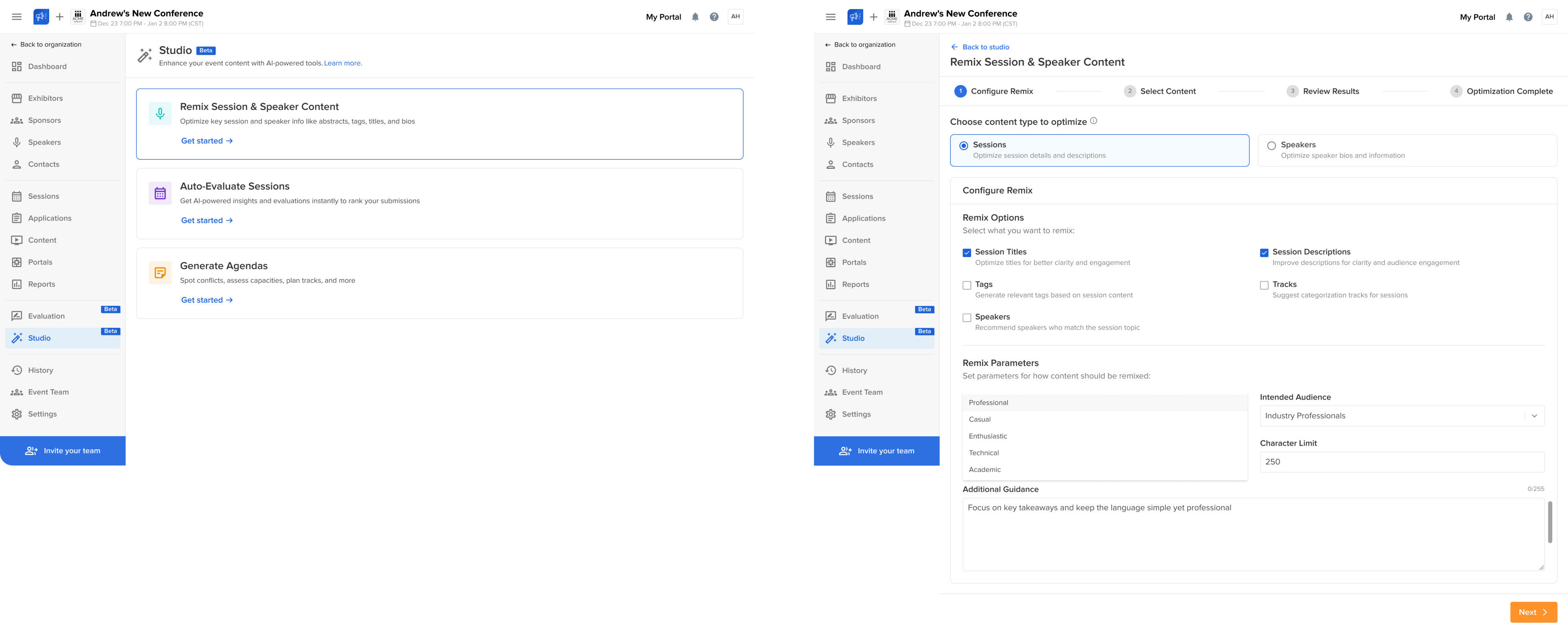
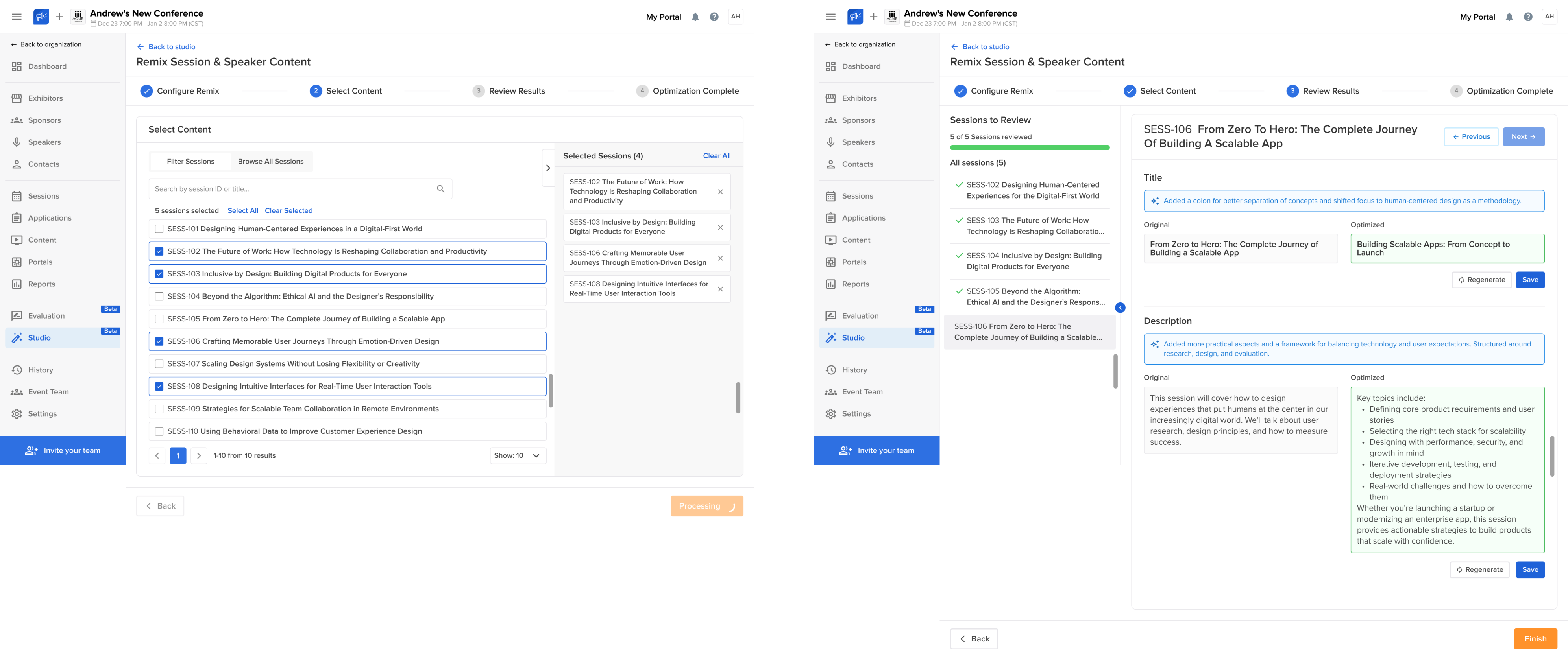
This structure gave users full control over how content was enhanced and made it effortless to polish dozens of items in one go.
Evaluation AI: Scalable Feedback with Virtual Reviewers
While Studio AI was entirely new, Evaluation AI evolved from Sessionboard’s existing manual review process. Our designer extended the evaluation flow by adding a selector that let users choose between human or AI reviewers.
To support this, she introduced:
- Three prebuilt personas with editable traits and tones
- The ability to create fully custom personas for different session types
- A clean interface to preview, select, and manage AI personas in the review flow
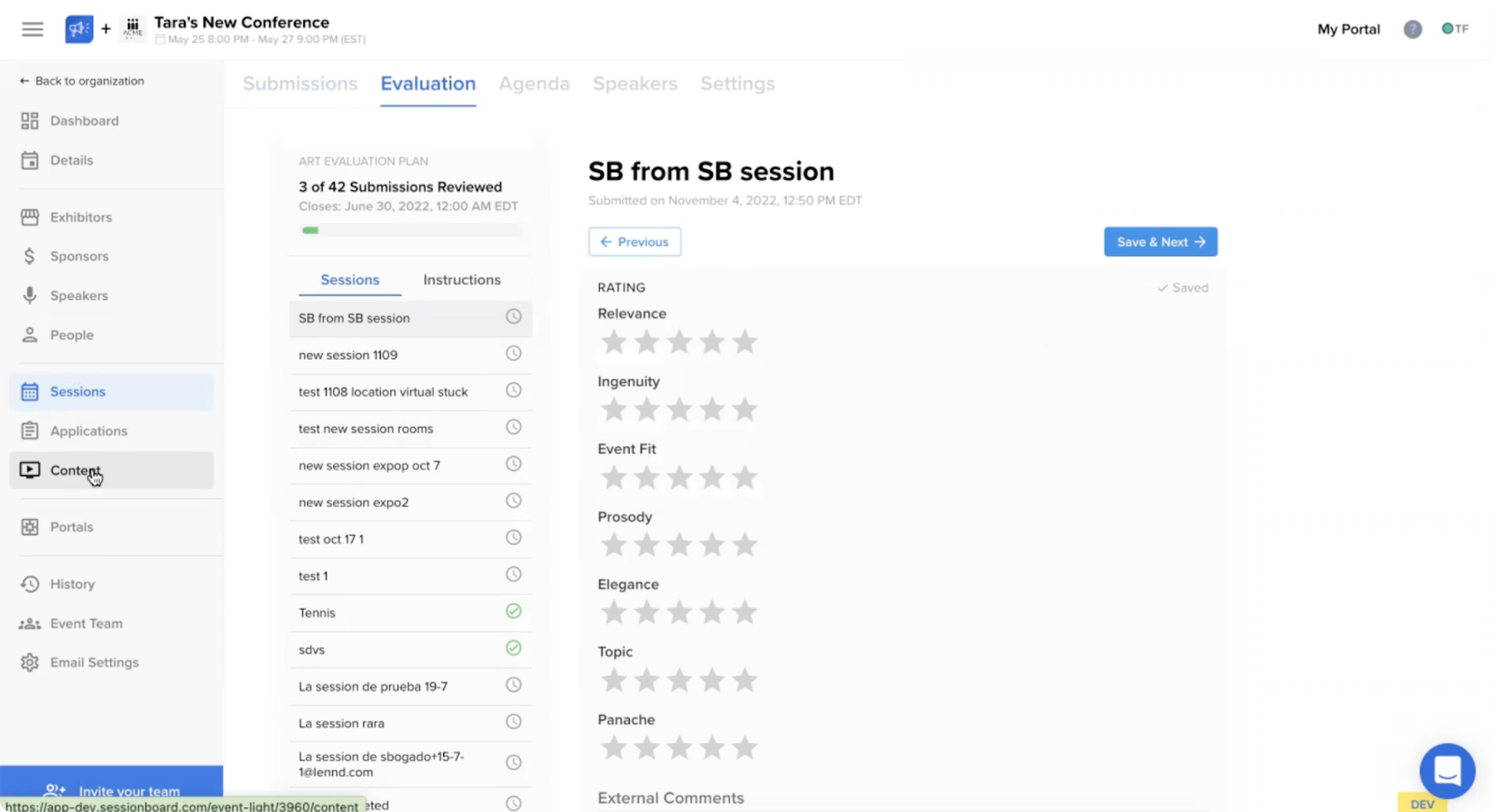
.webp)
Each persona delivered structured scores and short generated responses to custom review questions, making feedback both consistent and easy to digest. Once sessions were evaluated, the system summarized top- and low-rated entries, extracted key takeaways, and displayed a visual breakdown of scoring trends — all without the need for manual compilation.
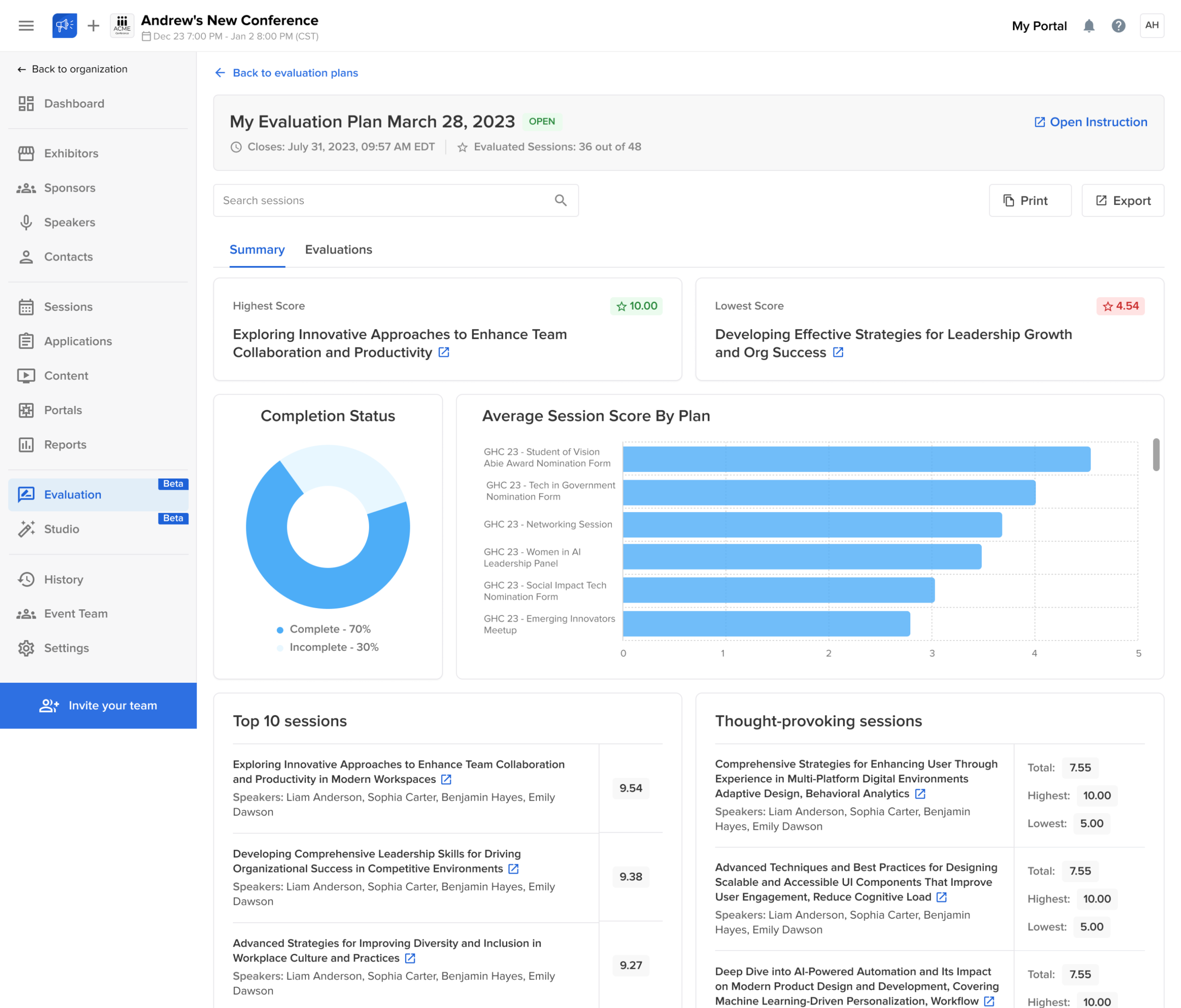
By embedding both tools directly into Sessionboard’s workflows and designing every interaction to feel intuitive and reliable, Eleken helped the client scale their product offering without distracting their internal team from future growth.
From Cleanup to Growth
By solving critical UX, UI, and data structure problems, Eleken freed Sessionboard’s internal team to focus on what mattered most — product growth. With a scalable design system and two AI-powered features successfully launched, the platform is no longer patching holes — it’s building the future of event content management.
We fixed the core usability issues that had slowed down adoption, cleaned up legacy design debt, and built systems that could actually support scale. Most importantly, we proved ourselves as a reliable, autonomous partner, giving Sessionboard the freedom to stop micromanaging fixes and start shipping new ideas.

